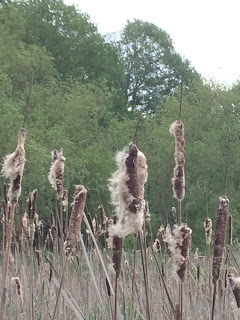Spencer Island!
I really like this picture that I took because it gives a "big picture" of the organism I am choosing to focus on. I am choosing to focus on the grass! I believe the grass is either Sedge or Rushes. It wasn't doing anything that I can see with the human eye, but I'm sure it was doing lots! Like helping to filter out the water that comes from runoff and streams. I think the ecological role of this organism is a pretty important one. It is all over the place and provides shelter for small birds, ducks, frogs, small fish even. It can help feed the small fish because bugs can fall off the grasses into the water where fish can get at them to eat them. Their roots help to filter out pollutants such as fertilizers, soaps, coppers, all coming from runoff water. They also provide food to bugs and produce oxygen, as most plants do. The most interesting thing I learned is that it used to be an industrial area. It's amazing how us humans can destroy an area, and nature can turn it into a (mostly) natural environment again. The things I've been learning over the last few weeks has definitely changed my view about Wetlands in the PNW. I used to think that wetlands were just gross muddy areas that no one could do anything with, but they are so diverse and are able to home so much life while being surrounded by human activity, it amazes me. I wish I had known how incredible wetlands are before this! A question that came up on this visit was how are wetlands able to thrive when so much pollution goes through them? I know they are able to filter, but I feel like a lot more goes into them than they can filter out. Or maybe I'm wrong and most wetlands aren't really "thriving"



Lovely photo and great post! You make a good point- wetlands can filter but only so much pollution before the wetlands themselves are over-polluted!
ReplyDelete